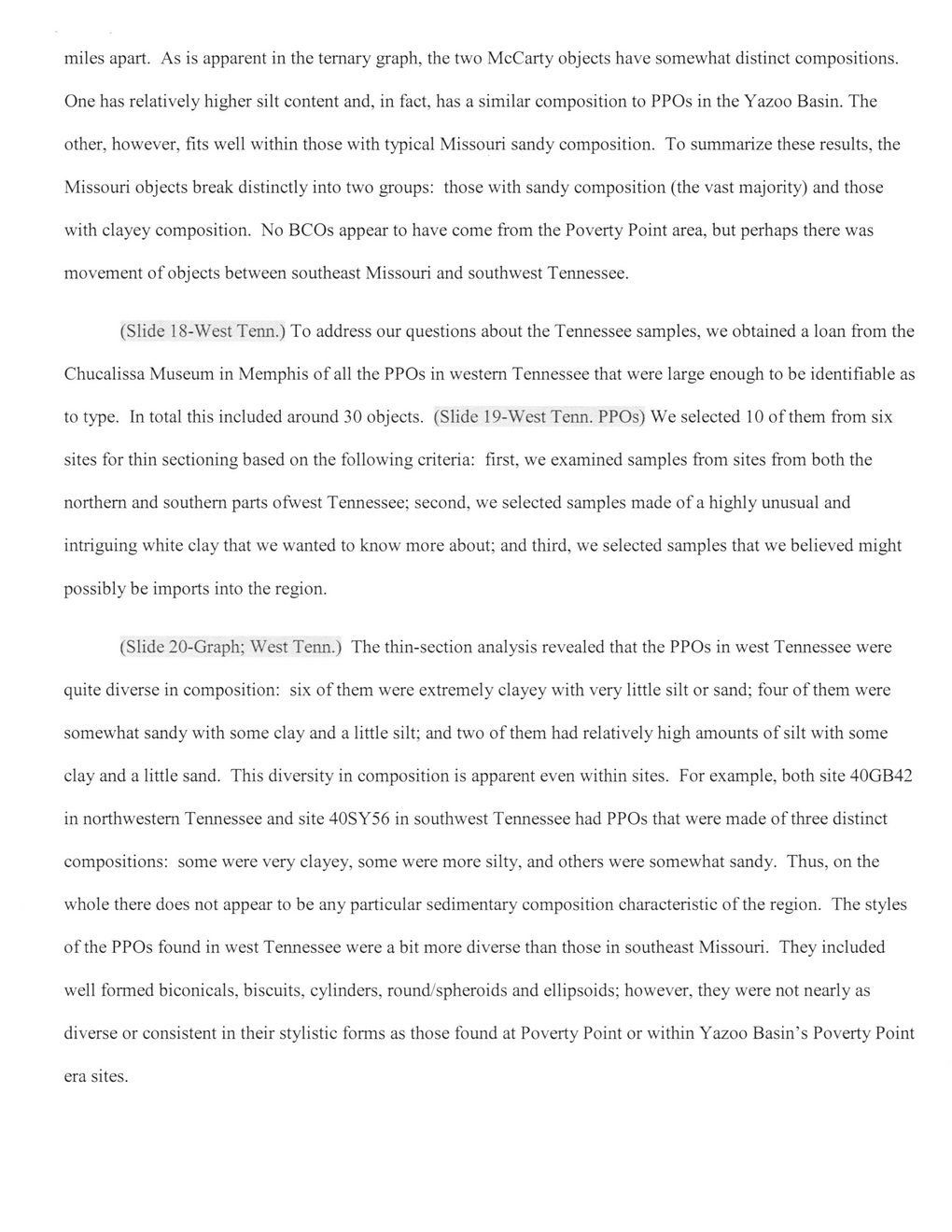This text was obtained via automated optical character recognition.
It has not been edited and may therefore contain several errors.
miles apart. As is apparent in the ternary graph, the two McCarty objects have somewhat distinct compositions. One has relatively higher silt content and, in fact, has a similar composition to PPOs in the Yazoo Basin. The other, however, fits well within those with typical Missouri sandy composition. To summarize these results, the Missouri objects break distinctly into two groups: those with sandy composition (the vast majority) and those with clayey composition. No BCOs appear to have come from the Poverty Point area, but perhaps there was movement of objects between southeast Missouri and southwest Tennessee. (Slide 18-West Tenn.) To address our questions about the Tennessee samples, we obtained a loan from the Chucalissa Museum in Memphis of all the PPOs in western Tennessee that were large enough to be identifiable as to type. In total this included around 30 objects. (Slide 19-West Term. PPOs) We selected 10 of them from six sites for thin sectioning based on the following criteria: first, we examined samples from sites from both the northern and southern parts ofwest Tennessee; second, we selected samples made of a highly unusual and intriguing white clay that we wanted to know more about; and third, we selected samples that we believed might possibly be imports into the region. (Slide 20-Graph; West Tenn.) The thin-section analysis revealed that the PPOs in west Tennessee were quite diverse in composition: six of them were extremely clayey with very little silt or sand; four of them were somewhat sandy with some clay and a little silt; and two of them had relatively high amounts of silt with some clay and a little sand. This diversity in composition is apparent even within sites. For example, both site 40GB42 in northwestern Tennessee and site 40SY56 in southwest Tennessee had PPOs that were made of three distinct compositions: some were very clayey, some were more silty, and others were somewhat sandy. Thus, on the whole there does not appear to be any particular sedimentary composition characteristic of the region. The styles of the PPOs found in west Tennessee were a bit more diverse than those in southeast Missouri. They included well formed biconicals, biscuits, cylinders, round/spheroids and ellipsoids; however, they were not nearly as diverse or consistent in their stylistic forms as those found at Poverty Point or within Yazoo Basin’s Poverty Point era sites.

Claiborne Historical Site Guerin-Giardino-(040)